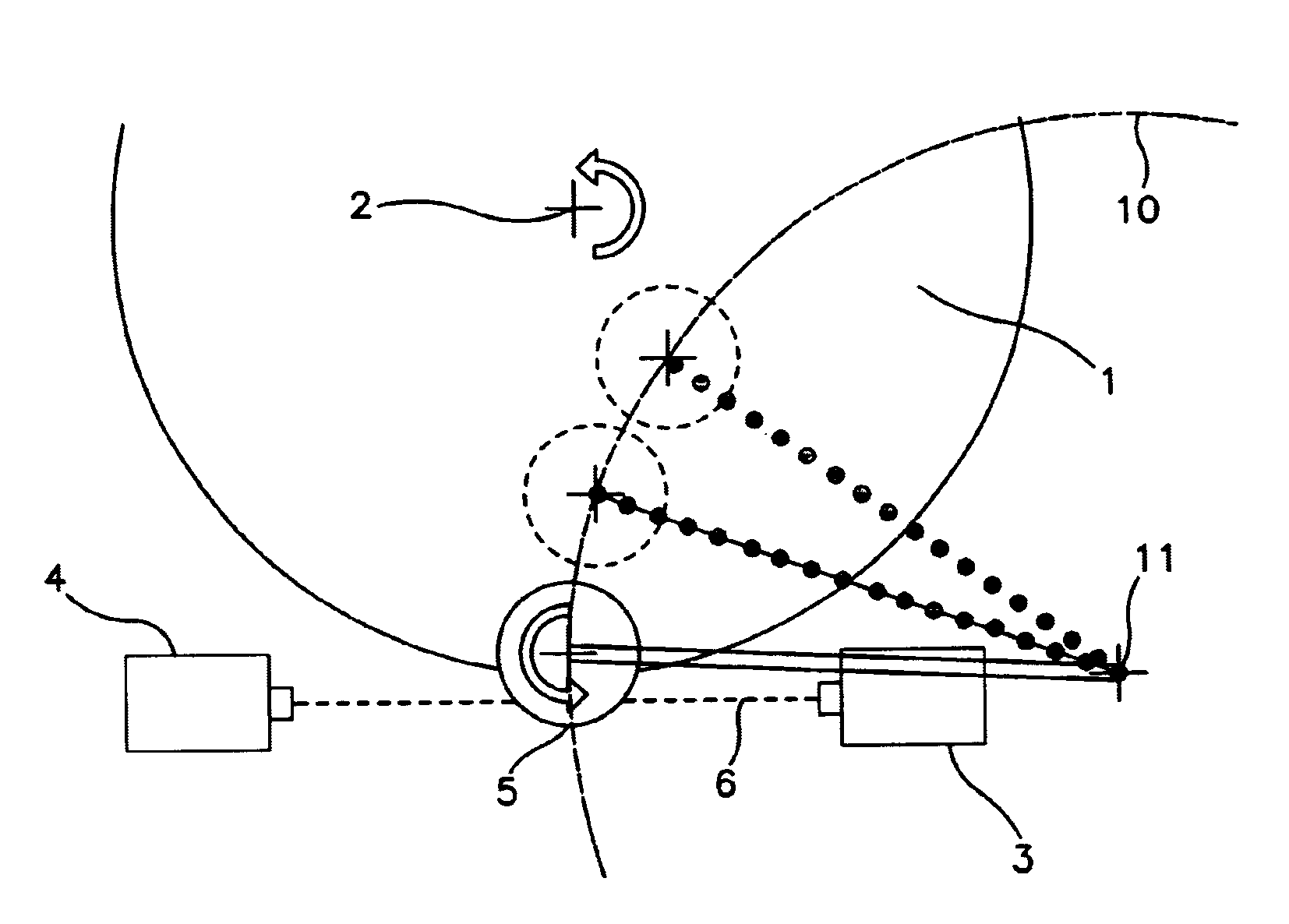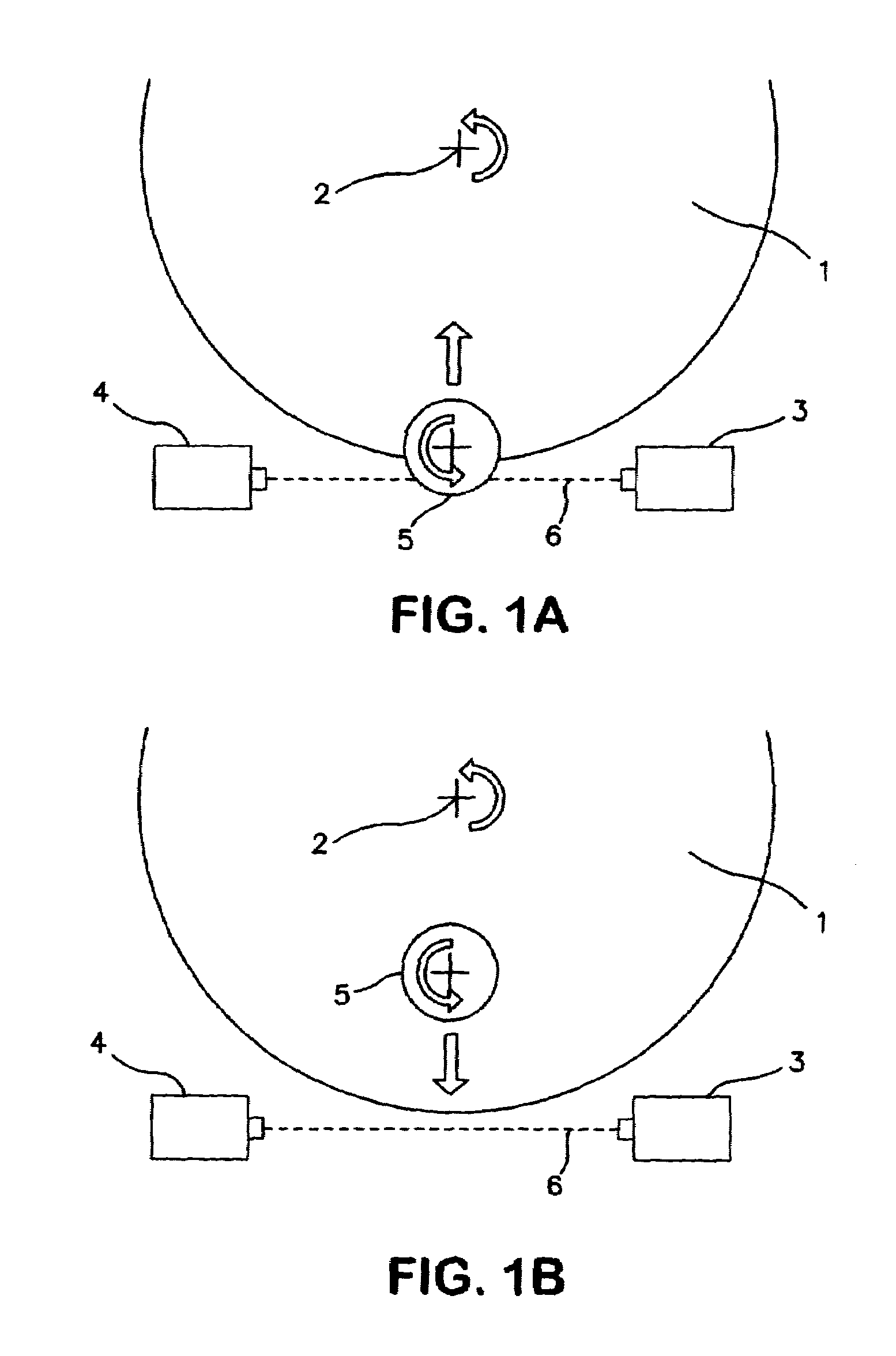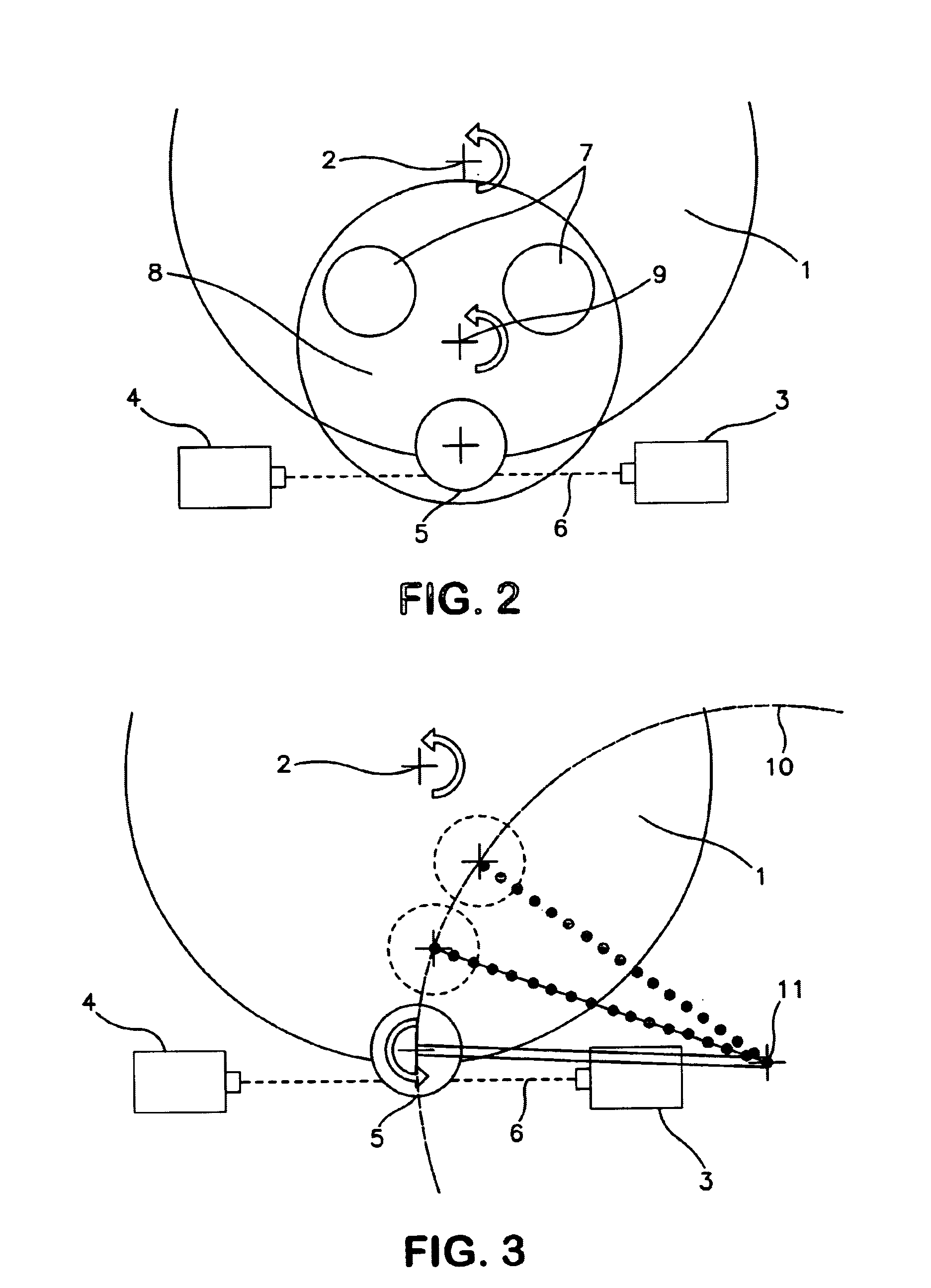Method and apparatus for inline measurement of material removal during a polishing or grinding process
a technology of material removal and polishing process, which is applied in the direction of grinding/polishing apparatus, grinding machine components, grinding/polishing machines, etc., can solve the problems of limited polishing speed, manual and time-consuming investigation, and limited mechanical set-up and flexibility of the polishing pad, so as to save time in the process
- Summary
- Abstract
- Description
- Claims
- Application Information
AI Technical Summary
Benefits of technology
Problems solved by technology
Method used
Image
Examples
example 1
Optimization of Self-timing Parameters
[0108]To prove the feasibility of the invention an experimental set-up consisting of a rebuilt Labopol-6, Struers and a laser scanning micrometer (LS-5041, Keyence) was built. The LS-5041 was connected to a personal computer by RS-232 and controlled by a LS-5001 unit via the standard controller software from Keyence. The LS-5041 was run in self-timing mode during this experiment.
[0109]To simulate the polishing situation the set-up sketched in FIG. 7 was deployed. In FIG. 7A the set-up is seen from the top. The test sample (5) was a steel cylinder on the end of a moving arm (41). The moving arm was connected to a metal foot (40) by a rotatable metal cylinder (42). In FIG. 7B the same set-up is seen from the side. The laser receiver and the laser beam ((4) and (6), respectively, in e.g. FIG. 7A) are hidden behind the laser emitter (3).
[0110]The pause from the laser beam lattice was broken until the beginning of the measurement was varied between 1...
example 2
Sensitivity Towards Mechanical Vibration of the Experimental Set-up
[0113]The sensitivity towards mechanical vibration of the system is crucial for the feasibility of the system since it is an inline system.
[0114]The sensitivity towards mechanical vibration of the system was tested using a LS-5041, Keyence, placed on a Labopol-6, Struers. A steel cylinder with parallel end faces was placed in the measuring field of the LS-5041. The sample height was measured with the Labopol-6 deactivated and with the Labopol-6 running with 100 rpm.
[0115]The LS-5041 was run in normal mode meaning that the height of the cylinder was measured continuously.
[0116]In FIG. 8 screen prints of the results are shown. The results show that the measured height of the sample is 18.873 mm (without vibration, FIG. 7A) and 18.874 mm (with vibration, FIG. 7B), respectively. In both cases the measurement varies approximately ±2 μm. It is noted that the measured height does not vary significantly. Furthermore, the var...
example 3
Sensitivity of Measurement Towards Water
[0117]Grinding processes are often cooled by excessive amounts of water. The sensitivity towards both airborne water droplets as well as drops of water on the laser transducer and receiver window was therefore investigated.
[0118]The LS-5041 may be programmed to take into account only bulk items and airborne water droplets which obstruct the laser beam and will therefore not in general contribute to the measured height. If a droplet by chance is placed immediately above or below the shadow of the sample, it will contribute to the measured height but since the result to be carried to the controller will be an average over time the contribution from a droplet drifting in the air will not be significant for moderate amounts of water droplets.
[0119]Drops of water on the laser glass will act as an optical lens and hence divert the direction of the monochromatic laser beam. Since the laser receiver will only accept beams coming in a straight line fro...
PUM
 Login to View More
Login to View More Abstract
Description
Claims
Application Information
 Login to View More
Login to View More - R&D
- Intellectual Property
- Life Sciences
- Materials
- Tech Scout
- Unparalleled Data Quality
- Higher Quality Content
- 60% Fewer Hallucinations
Browse by: Latest US Patents, China's latest patents, Technical Efficacy Thesaurus, Application Domain, Technology Topic, Popular Technical Reports.
© 2025 PatSnap. All rights reserved.Legal|Privacy policy|Modern Slavery Act Transparency Statement|Sitemap|About US| Contact US: help@patsnap.com



